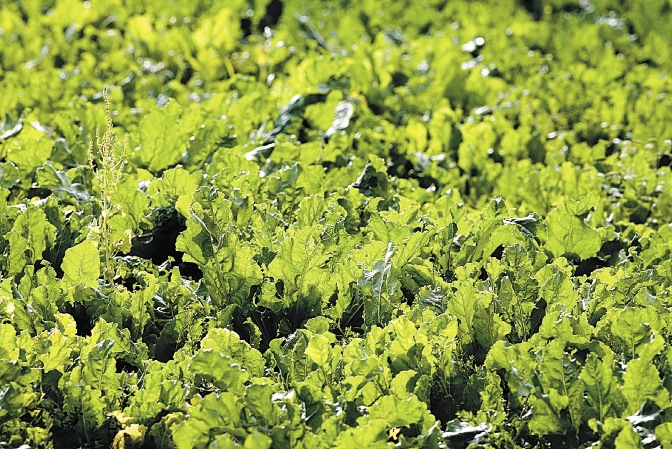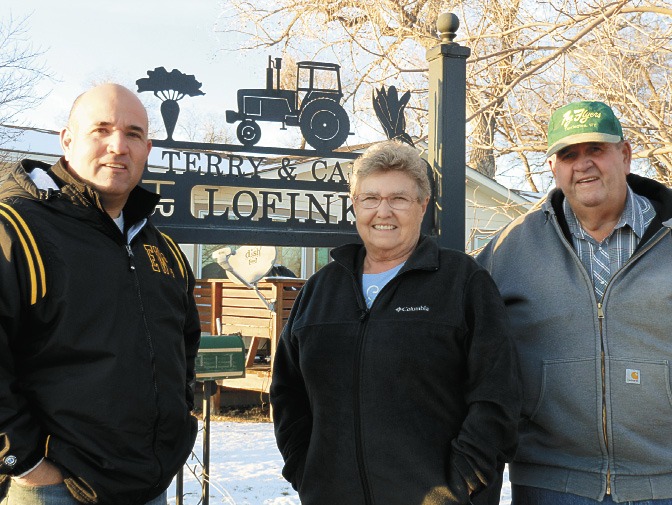 The Lofinks hit one milestone in September and look forward to reaching another one in 2014.
The Lofinks hit one milestone in September and look forward to reaching another one in 2014.
Terry G. and Carol Lofink celebrated 50 years of marriage on that first occasion.
"We're going on 51 now," Terry said. "I'm gonna try to farm 50 years. There are days I want to slow down and retire. Then I get out of the house, and I want to go. It's a great life to be on the farm.
"I can do what I want when I want," he said. "And I enjoy messing in the dirt, growing stuff and being around equipment."
He always hates to see growing season end.
"The winter gets me with nothing to do," Terry said. "But my son has cattle now, so there will be something to do. You can bet my son will get me something to do. He has 80 head of Black Angus. He loves messing with cattle."
The Lofinks have a long history in agriculture.
"We got married in 1962 and then in 1964, I started farming," he said. "I was working with my dad, Arthur "Art" Lofink, before that. My dad lived in Huntley, Wyo."
Terry, 70, and Carol, 68, reside in Goshen County.
"My parents were farming, and we farmed together," Terry said. "I had two 80s. I'm farming my great-grandmother's farm. They started growing sugarbeets right away."
The sugarbeet factory in Torrington, now owned by Western Sugar, was built in 1928.
Great-grandfathers, Conrad Lofink, Conrad Keller and Conrad Green, shared more than the same first name. They all had a passion for growing beets and working outdoors.
Now the tradition is continuing for another generation.
Terry C. Lofink, 44, recently returned to Torrington.
"I moved back from Yuma, Colo., last summer in 2011 and started farming with my dad," he said.
"It's been a good move for all our families to get closer," Terry C. said. His wife, Whitne, teaches school in nearby Scottsbluff, Neb. They have three sons, Beau, 17, Braden, 14, and Blake, 11.
The Lofink farm has close to 800 acres of which 230 acres are for sugarbeets. They also grow corn and pinto beans.
"We do a lot of custom farming on the side for neighbors," Terry G. said. "We get the ground ready and plant it for them."
Beets are planted around the first of April and harvested about Oct. 10. The trip to the beet pile at Western Sugar is only about 10 miles.
The family also farms about 130 acres of land belonging to Western Sugar, all flood irrigated. That made it tough for them last season.
"Anything that wasn't under pivot was tough for us, because it was dry," Terry G. said. "This was just a weird year with no moisture. We made it work."
Their yield averaged 23 tons of beets per acre and 17.5 percent sugar content. About four years ago, the sugar content hit its top mark of 18.2 percent.
The drought posed challenges for growers, but the Lofinks worked around it.
"Most are under pivot," Terry G. said of his beets. "They grew well. Anyone who had land flood irrigated-it was tough. It's the life of farming. You take the good with the bad. This was the driest year of the last 48."
"It was a pretty challenging year for all farmers," Terry C. added. "If people stuck with it, it was a prosperous year."
About four years ago, his father began growing Roundup Ready beets.
"Farming has changed a lot in the last 11 years, because you couldn't afford to have the labor work them," Terry C. said. "Now you're more or less weed free with two to three sprayings. You can't get labor any more."
"Plant them, spray them with chemicals," Terry G. said. "You don't need all that labor to thin them, hoe them and weed them."
Western Sugar Cooperative officials help in other ways.
"They're really good about keeping farmers informed about what they need to know," Terry G. said. "They do a good job getting data about seeds, chemicals and pesticides."
Both father and son feel confident about the future of the sugar industry.
"It has been here 100 years," said Terry C. "I don't know why it'd go away."
"I'm sure in the future, there will be more changes coming," Terry G. added. "The technology is unreal. It's hard keeping up with it."


